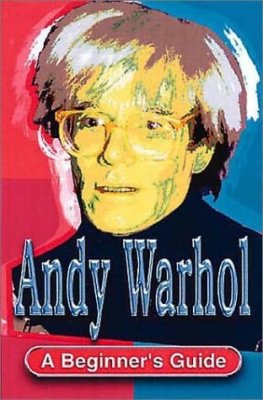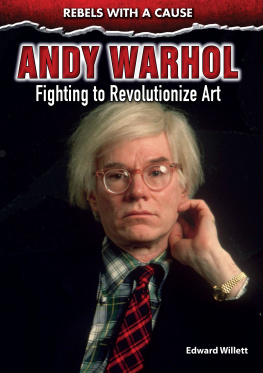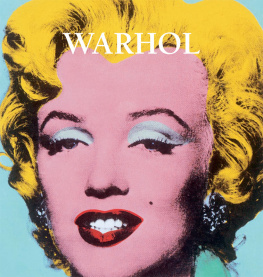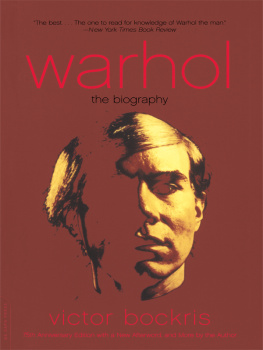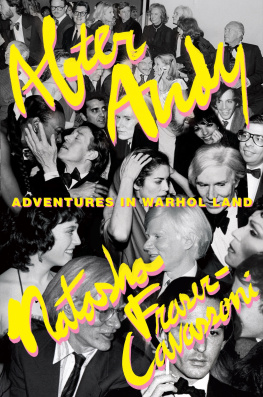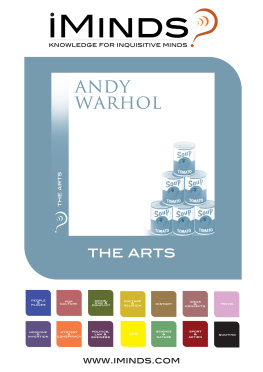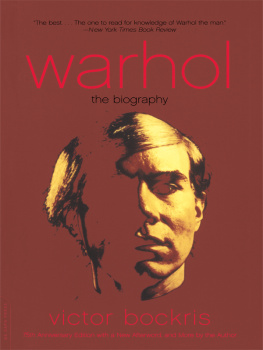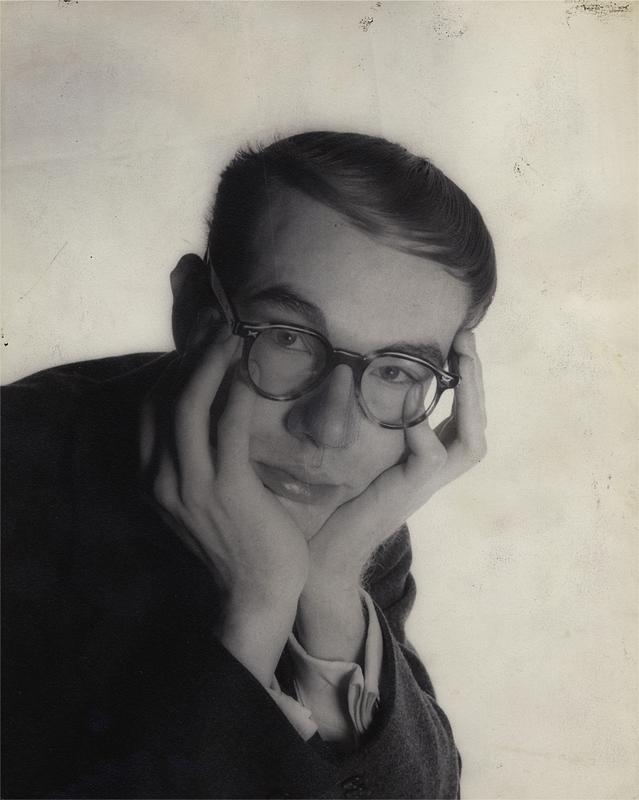Andy Warhol, 1950s. Photograph by Melton-Pippin (with pencil adjustments to face).
The Andy Warhol Museum, Pittsburgh
I can draw anything: from Pittsburgh to Madison Avenue
Andy Warhol worked hard to erase Andrew Warhola. In the iconic images of the pop artist wearing a silver wig and leather jacket at the height of his 1960s fame, the shy, pale boy born in Pittsburgh in 1928 is nowhere to be seen. His early childhood did, however, have a major impact on the artist he was to become, particularly his intensely religious upbringing in the Ruthenian Catholic Church (close to the Russian Orthodox tradition), his bouts of ill health and resulting hypochondria, as well as the working-class poverty his family experienced. His parents Andrej and Julia Warhola were immigrants to the United States from Mikova, a small village now on the Slovakian-Ukraine border, then on the edge of the Austro-Hungarian Empire. Warhol only learnt English when he entered elementary school; a hybrid dialect of Hungarian and Ukrainian known as Po Nasemu was spoken at home. Andrej Warhola became aware of his sons prodigious artistic talent early on, and started saving money to send him to college. Tragically, he would never see his sons later success: he died suddenly in 1942, just as Andy was beginning high school.
After completing a Bachelor of Fine Arts in Pictorial Design at the Carnegie Institute of Technology in Pittsburgh, Warhol moved to New York in June 1949 with the goal of becoming a commercial artist and illustrator. His first job was to illustrate an article in womens fashion magazine Glamour, appropriately titled Success Is a Job in New York. As part of his relentless efforts to seek commissioned work, in a letter to a magazine editor that year he declared: I can draw anything. It was also in 1949 that he officially changed his surname to the Americanised Warhol a decisive step in his reinvention.
As Warhol himself explained in 1975: I started as a commercial artist, and I want to finish as a business artist making money is art and working is art and good business is the best art. diversifying those products across a huge range of artistic and pop-cultural means (from film, wallpaper and media installations, to TV commercials, celebrity magazines and portrait commissions), and by dissolving the idea of the artist-as-genius, Warhol radically redefined the parameters of artistic practice in the postwar period.
As a commercial illustrator in the 1950s, Warhol worked primarily on high-fashion advertising jobs, but extended his reach to many other avenues for design. In 1951 he produced a number of drawings that were selected by the major broadcast network CBS for the LP release of their documentary radio series The Nations Nightmare. A drawing of a young man injecting drugs into his arm (Tate) was used for the record sleeves cover. The hard-hitting social message of the radio programme, linking recreational drug use to the rise in crime across America, is captured by Warhols lithe line drawing that emphasises the outstretched arm and clenched fist.
In the summer of 1952, the exhibition preview for Andy Warhol: Fifteen Drawings Based on the Writings of Truman Capote was apparently attended by the author himself, something of a triumph for Warhol, who later explained the background to this event: I admire people who do well with words and I thought Truman Capote filled up space with words so well that when I first got to New York I began writing short fan letters to him and calling him on the phone every day until his mother told me to quit it.
The blotted line
Warhols graphic style at this time was characterised by his use of the blotted-line technique, which he first encountered while studying in This infinitely generative process provided Warhol with an early manifestation of his famed assembly-line productivity.
In 1955 Warhol landed a major commission for the shoe company I. Miller. His adverts appeared every week in the New York Times, and the following year he was awarded the prestigious Annual Art Directors Club Award for this work. In the same year, he published a book of shoe drawings, la recherche du shoe perdu (The Museum of Modern Art, New York), which was again a collaborative effort, with his mother handwriting the text of Ralph Pomeroys accompanying poems. The exaggerated colours and over-the-top ornamentation underline the shoes role as a fetish object, with the luxurious variety of designs assuming an erotic power.
Allocating much of the labour of drawing to assistants such as Gluck allowed Warhol more time for his private works, such as Male Torso 1956 (Tate). This is one of many suggestive line drawings featuring young male subjects, reduced to body parts or closeups under the artists desiring gaze. Now basking in undeniable commercial success, in 1956 Warhol embarked upon a round-the-world trip with his close friend Charles Lisanby. The gold-leaf detailing of Baboon 1957 (Tate) suggests the influence of his time in the Far East, particularly the gold furniture of Thailand. technique) are surrounded by handwritten annotations and a variety of costume-jewellery close-ups. This sheet of drawings appears to be preliminary work for a magazine commission, and in all likelihood its final appearance is purely the result of chance Warhol often asked his friends to complete his drawings at the colouring parties he hosted in New York cafs such as Serendipity.
Leaving the commercial world behind
Around 1960 Warhol set his sights on working exclusively as an artist, keen to move on from his career as an illustrator for hire. He achieved this aim in 1962; prior to this date commercial work still supported his attempts to become an artist. Now, rather than contributing to the advertisements themselves, Warhol began using the print culture of advertising and daily newspapers as subjects for his fine-art practice. Journal American c.1959 (The Andy Warhol Museum, Pittsburgh) is a hand-drawn newspaper front page, but one that omits several sections and executes only schematic outlines of the photographic components. The stark headline Woman Stabs Rev. King in Harlem hints at the unsettling territory that Warhol would soon stake out in his Death and Disaster series. This ballpoint drawing is also important as a transitional work for Warhol: it retains something of the illustrators craft, while focusing on the digestible daily news, the subject matter of the next phase of his work. The first fully realised painting from this period is thought to be Advertisement, made in April 1961 (Hamburger Bahnhof Museum fr Gegenwart, Berlin). A hand-drawn composition of fragments traced from newspaper advertisements, this monochrome work imports the collage aesthetic common to commercial illustration that Warhol had spent a decade mastering.
Water Heater 1961 (The Museum of Modern Art, New York) and Dr Scholls Corns 1961 (The Metropolitan Museum of Art, New York) are further works based on advertisements clipped from newspapers. They still rely on the semi-expressive, gestural marks and drips of direct painting (affirming the overwhelming importance of abstract expressionism to artists of Warhols generation), while demonstrating his emerging pop tendencies, particularly the embrace of branded products. Although these new, monochromatic works on canvas may appear radically different from his illustrations of the 1950s, the art
Before and After I 1961, one of a series of paintings based on the same advert, points to Warhols deep understanding of the postwar American cult of self-improvement, while reflecting his own dissatisfaction with his appearance (The Metropolitan Museum of Art, New York). He had undergone a nose job in 1957, and claimed to be disappointed with the results. The doubling of the face across its moment of transformation hints at the monumental repetition to come in subsequent works. Warhol exhibited a selection from this group of new paintings as part of a window display for the New York department store Bonwit Teller, also in April 1961. This display returned these paintings to the commercial sphere, where they formed a literal backdrop for mannequins dressed in the latest fashion garments. The subject matter of these paintings, as well as newspaper advertisements, included comic strips and characters such as Dick Tracy. In this same year the eminent New York art dealer Leo Castelli declined to represent Warhol, since he feared these comic-strip works were too similar to the Ben Day dot paintings of Roy Lichtenstein, who was already showing at Castelli. As a result, Warhol changed tack: Right then I decided that since Roy was doing comics so well, that I would just stop comics altogether and go in other directions where I could come out first like quantity and repetition.


